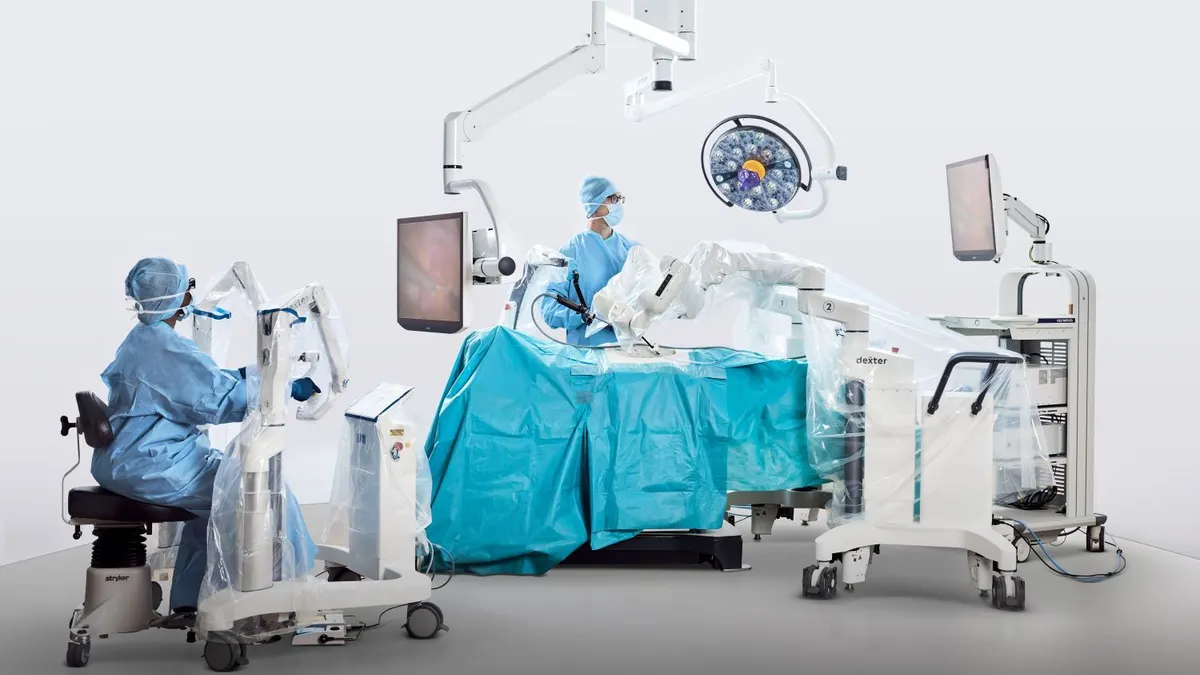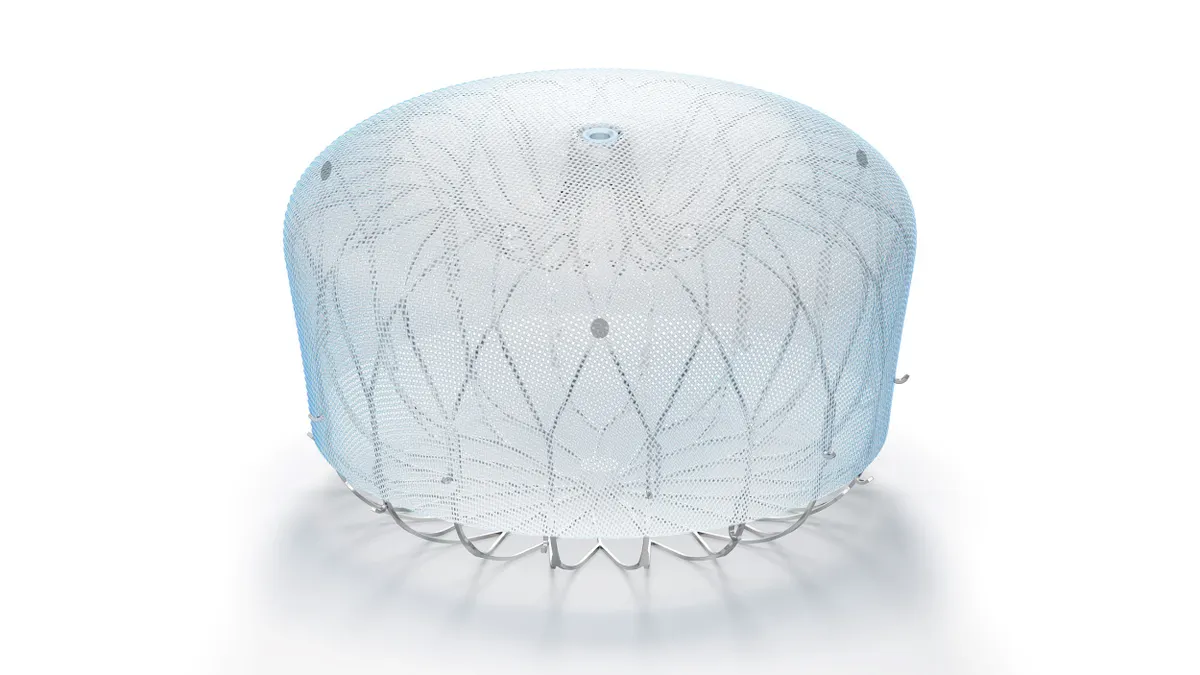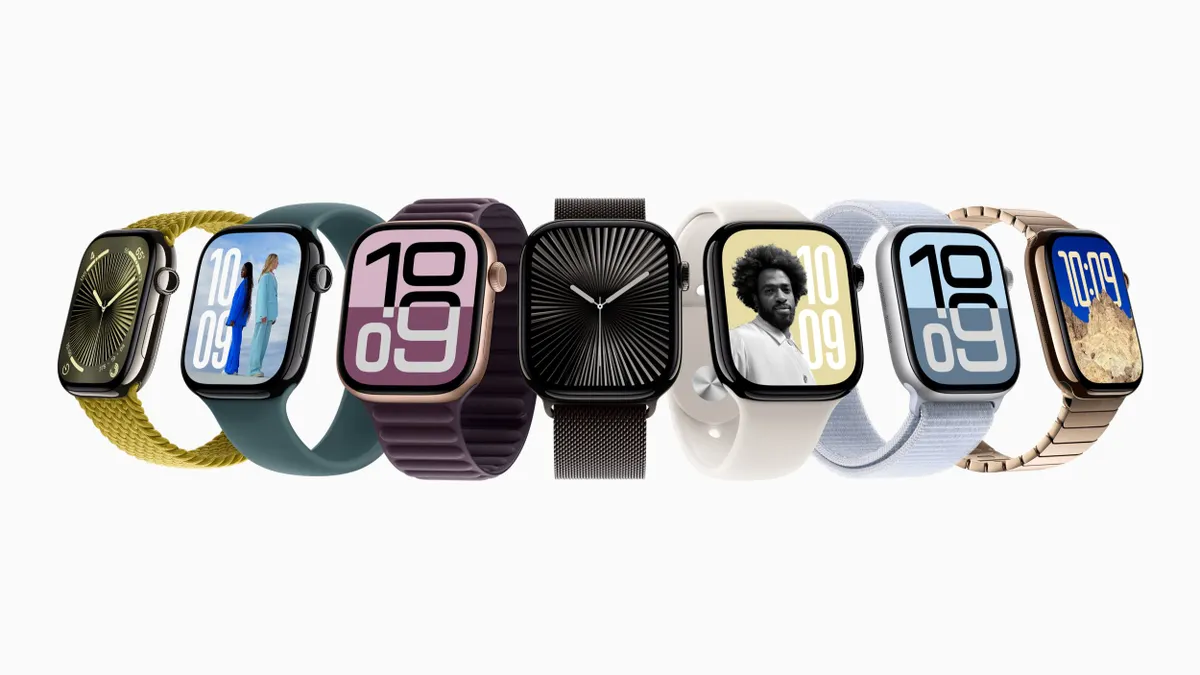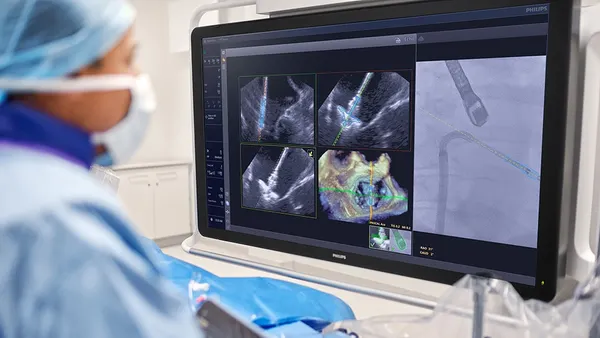The first over-the-counter glucose sensors will launch in the U.S. this summer. Dexcom and Abbott received Food and Drug Administration clearance for OTC continuous glucose monitors in March and June, respectively. Although the devices use the same hardware as past CGMs, they’re intended for a different group of users — people who do not take insulin.
Dexcom is targeting people with Type 2 diabetes who don’t take insulin with its new Stelo device, although Stelo can also be used by people who don’t have diabetes, thanks to a broad label from the FDA. Abbott, meanwhile, will split its over-the-counter products into two sensors: Lingo, which is intended for people who don’t have diabetes, and Libre Rio, which will compete more directly with Dexcom for Type 2, non-insulin users.
The new devices could allow the companies to reach about 25 million people in the U.S. with Type 2 diabetes who don’t take insulin, 15 million people who have been diagnosed with pre-diabetes and an estimated 85 million people who have undiagnosed pre-diabetes, William Blair analyst Margaret Kaczor Andrew said in an interview.
MedTech Dive spoke to experts about what to expect from the three product launches.
When will the devices be available and how much will they cost?
Dexcom is planning a late August launch of its Stelo sensor, Chief Operating Officer Jake Leach said in an interview. Dexcom will first sell the devices online, which Leach said will help the company learn more about users and their buying patterns, although he sees “great opportunity in other methods of distribution.”
Abbott also plans to sell its wellness-oriented Lingo device this summer through an e-commerce website. It has not yet disclosed timing for Rio.
Neither Abbott nor Dexcom have disclosed pricing for the upcoming products. In April, Dexcom CEO Kevin Sayer said Stelo “pricing is going to be competitive” with other cash-pay products.
Around that time, William Blair analysts said Abbott’s cash-pay price for its Freestyle Libre CGMs was about $80 per month.
In the U.K., where Abbott first launched its Lingo device, the company charges about 120 pounds per month (roughly $152). “While some pricing data is available in that market, management suggested it may not be reflective of domestic pricing,” Kaczor Andrew wrote in a Monday research note.
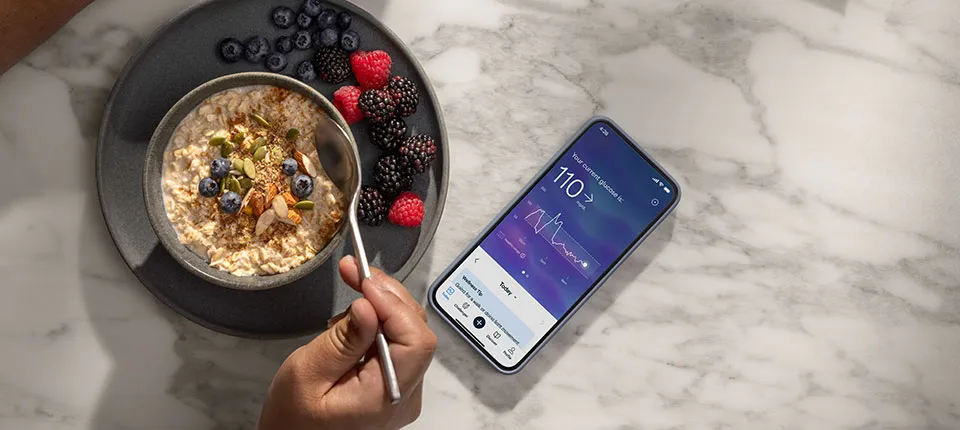
Why might people who don’t take insulin use a CGM?
Marilyn Tan, an endocrinologist with Stanford Medicine, said that while early CGMs were intended for patients on insulin, “increasingly, patients not on insulin are using CGMs.”
While hemoglobin A1c levels are a standard measurement of glycemic control, tests only provide an average over three months, Tan wrote in an email. She added that CGMs can provide minute-to-minute data and details on how that average was achieved.
“Particularly for diet-controlled patients and patients not on insulin, having a CGM can give important feedback about which foods raise their [glucose] and which do not, and each person reacts differently to different foods,” Tan said. “Therefore, this really allows for more individualized diet recommendations.”
For people with prediabetes, seeing this data can also be helpful and be a good motivator to make lifestyle changes. “As for ‘wellness,’ if someone does not have diabetes or prediabetes, it may be interesting to see glycemic excursions related to food and activity, and if it motivates them to improve their health, then it [can] be a useful tool,” she said.
William Blair’s Kaczor Andrew estimated that 700,000 to 800,000 people in the U.S. who don’t take insulin already use CGMs.
What software features set these apart from prescription devices?
Dexcom’s Leach said Stelo will include “quite a few features in it that are brand new to CGM users.” The app is designed to onboard people who have never used a CGM, as well as to educate them about what blood glucose means and how changes throughout the day are normal. The product’s main purpose is to help people manage their diet and activities to lower their average glucose, Leach said.
“We do expect that a large number of people are going to try [Stelo] that don't have diabetes."

Jake Leach
COO of Dexcom
Abbott’s Lingo “tracks glucose and provides personalized insights and customized coaching to help people create healthy habits, retrain their metabolism and improve their overall well-being,” a company spokesperson wrote in an email.
Lingo will provide minute-by-minute glucose data, specifically focusing on patterns after food intake and exercise, J.P. Morgan analyst Robbie Marcus wrote in a research note on Sunday.
Abbott shared less detail about its upcoming Rio device. Marcus expects it will have a more targeted software interface than the Libre 3, and will not have the alarms or notifications needed by people who take intensive insulin.
“This is also one of the most annoying features for patients, so it’s great to remove them for a patient group that doesn’t really need them,” he wrote.
BTIG analyst Marie Thibault expects the device won’t include an alarm system and will have more of a consumer angle. She also said Rio can measure a wider blood glucose range of up to 400 mg/dL, compared to Lingo, which caps at 200 mg/dL.

Why did Abbott and Dexcom take different approaches?
Abbott will offer two different over-the-counter CGMs because “there’s no one size fits all approach to managing care,” a company spokesperson wrote. For example, people living with diabetes might want features for insulin management, medication tracking and sharing data with a provider or caregiver, while people looking to better their overall health and wellness might need different features, the spokesperson wrote.
Dexcom is currently just offering one over-the-counter CGM. While Stelo is intended for people with Type 2 diabetes, “we do expect that a large number of people are going to try it that don't have diabetes,” Leach said.
After launching Stelo, Dexcom plans to iterate on its learnings to meet the needs of a broader group of users. Whether that means launching a separate device, like Abbott, is yet to be determined.
“We haven't quite decided exactly how that's going to go,” Leach said. “It really depends on how different the users’ needs are.”
Dexcom has estimated it will see $40 million in sales this year from Stelo. Abbott declined to share sales projections, Marcus wrote. He added that Abbott expects its diabetes business to grow to $10 billion in sales by 2028, which includes sales from Libre Rio but does not factor in Lingo.
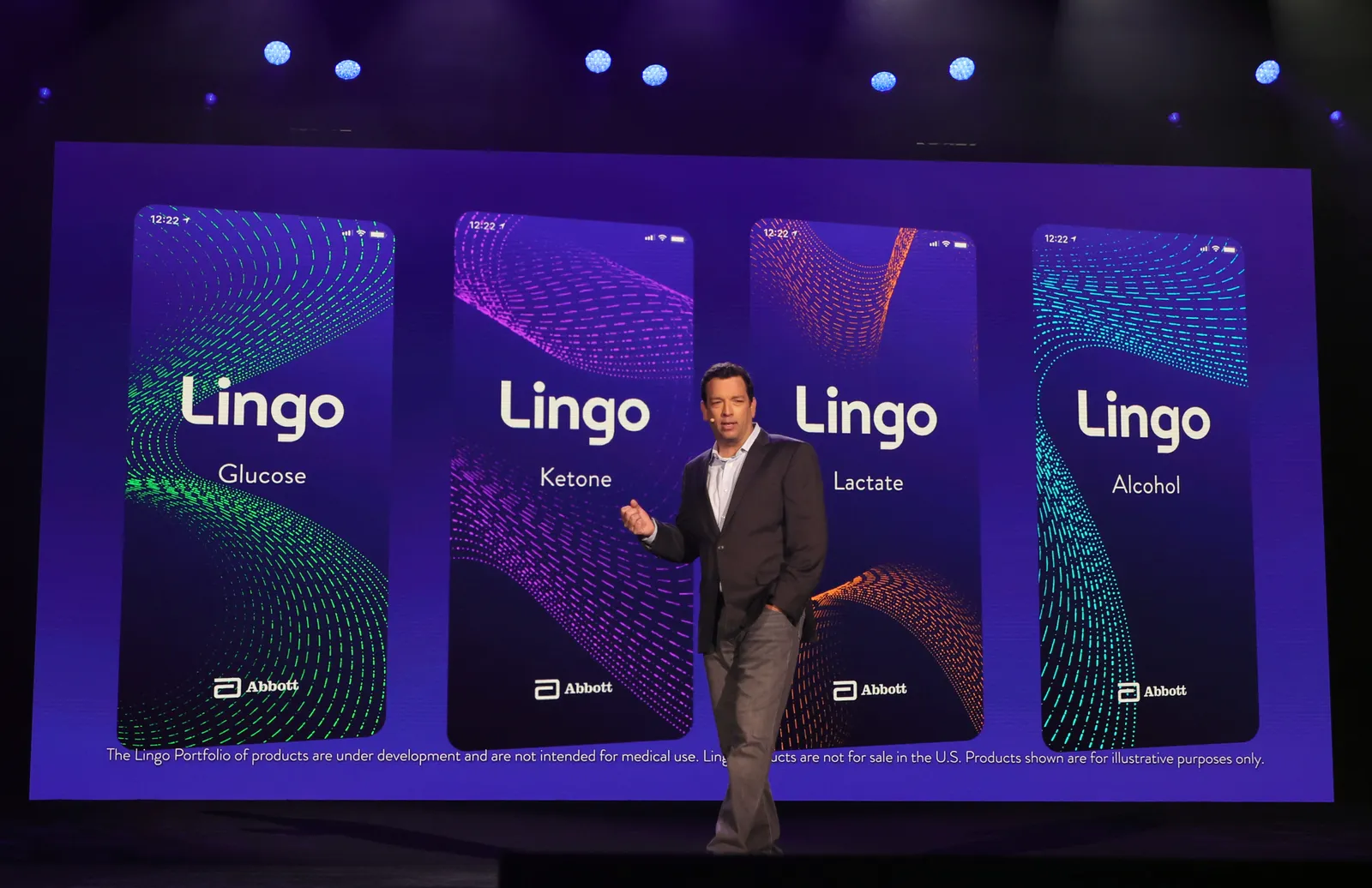
Will OTC devices make CGMs more accessible?
Stanford’s Tan said over-the-counter products may not necessarily lower the cost of CGMs because insurance should cover the devices for patients taking insulin.
“Without insurance, CGMs can be quite expensive even with patient assistance programs and coupons,” Tan wrote in an email. “I don't yet know how expensive the OTC CGMs will be, but they may not actually be cheaper than obtaining it through a prescription.”
On the other hand, insurance often doesn't cover CGMs for people with Type 2 diabetes who don’t take insulin, Joshua Neumiller, president-elect for healthcare and education at the American Diabetes Association, wrote in an email. “OTC CGM availability will help address access barriers for these individuals,” he added.
“I don't yet know how expensive the OTC CGMs will be, but they may not actually be cheaper than obtaining it through a prescription.”

Marilyn Tan
Endocrinologist at Stanford Medicine
Since the devices are FDA-cleared, people can use their health savings and flexible savings accounts to purchase them, the Abbott spokesperson wrote.
“Many people with diabetes already have coverage for our FreeStyle Libre system, and we’re continually looking to expand this coverage to help more people with diabetes get access to the technology,” the spokesperson added.
Is there a concern that people will use an OTC CGM when they need a prescription CGM?
BTIG’s Thibault said there’s some risk, but since prescription CGMs are well-covered by insurance, people would probably pay more to get them over the counter.
“The label is saying you aren't going to be dosing insulin off of this,” she said. “There's a little bit of risk that someone would use it in that way, but it's certainly off-label use and the market structure today disincentivizes those insulin users because they could get coverage another way.”
ADA’s Neumiller said a prescription CGM would be more appropriate for people taking insulin, who have a history of problematic glycemia or who could benefit from integrating their CGM with insulin pumps or other devices.
“It will be important to educate people with diabetes about the key functional differences between over-the-counter CGM and prescription CGM products,” Neumiller added.
Are other CGM-makers, such as Medtronic, likely to sell an OTC device?
Other companies might eventually pursue over-the-counter CGMs, but Thibault doesn't expect to see new entrants in the next 12 to 18 months.
“I don't see many companies that have the footprint today in CGM and the investment dollars to make that work,” she said, adding that Abbott and Dexcom currently dominate the market for disposable CGMs.











